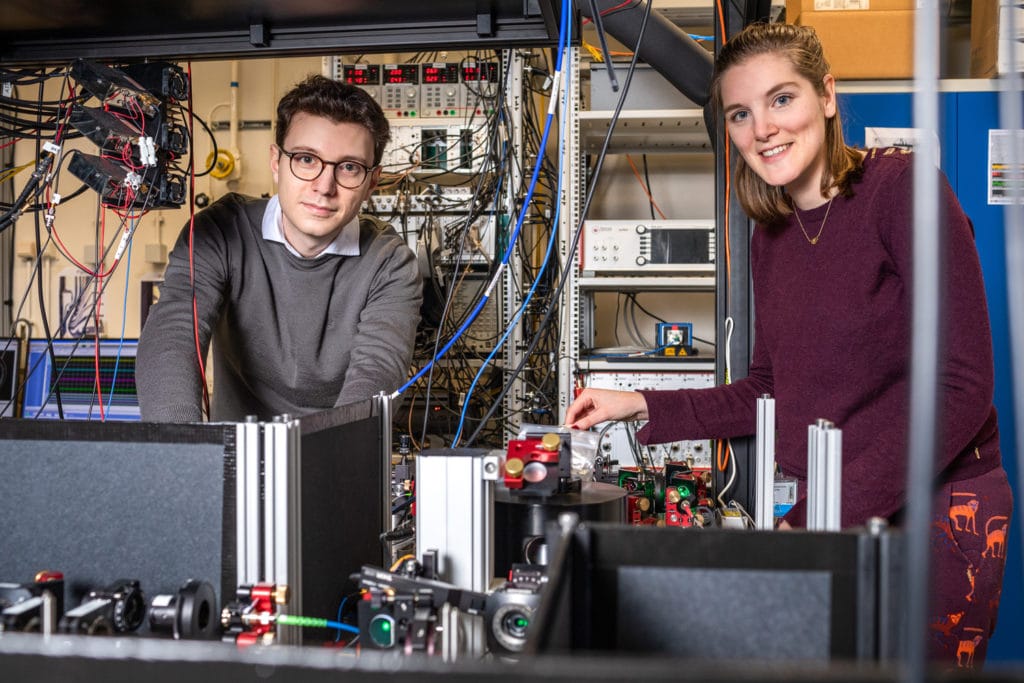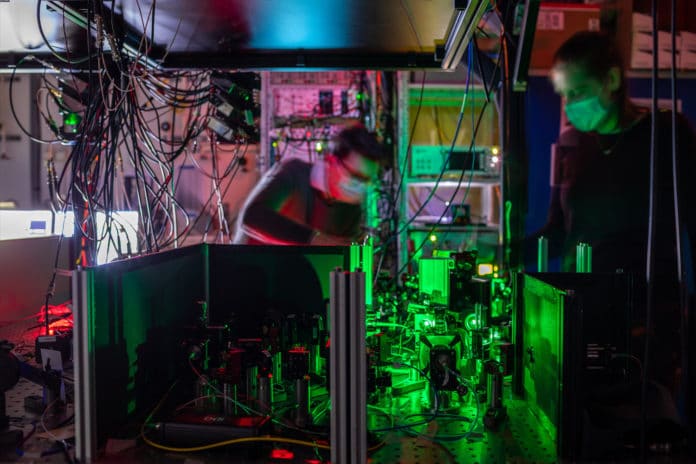Scientists worldwide are working on quantum internet to let quantum devices exchange some information within an environment that harnesses quantum mechanics’ weird laws. It will use quantum bits or qubits that can be 0 and 1 at the same time.
Even though researchers are working on it now, but the truth is the first step was taken in the last decade. At that time, two quantum devices were connected via a physical link.
To create a scalable quantum network, it is essential to pass quantum information through intermediate nodes. Also, several applications rely on entangled quantum bits distributed between multiple nodes.
Quantum entanglement offers quantum computers enormous power, and it is the fundamental resource for sharing quantum information over the future quantum internet.
By realizing their quantum network in the lab, a team of researchers at QuTech—a collaboration between Delft University of Technology and TNO—is the first to have connected two quantum processors through an intermediate node and established shared entanglement between multiple stand-alone quantum processors.

Usually, the quantum network consists of three quantum nodes at some distance within the same building. To prepare these nodes to operate, scientists invented a novel architecture that enables scaling beyond a single link.
The middle node (called Bob) has a physical connection to both outer nodes (called Alice and Charlie), allowing entanglement links with each of these nodes to be established. Bob is equipped with an additional quantum bit that can be used as memory, allowing a previously generated quantum link to be stored while a new link is being established. After establishing the quantum links Alice-Bob and Bob-Charlie, a set of quantum operations at Bob converts these links into a quantum link Alice-Charlie. Alternatively, by performing a different set of quantum operations at Bob, entanglement between all three nodes is established.
An exciting feature of this quantum network is that it announces the successful completion of these (intrinsically probabilistic) protocols with a “flag” signal. Such heralding is crucial for scalability, as, in a future quantum internet, many of such protocols will need to be concatenated.
Sophie Hermans, another member of the team, said, “Once established, we could preserve the resulting entangled states, protecting them from noise. It means that, in principle, we can use these states for quantum key distribution, a quantum computation, or any other subsequent quantum protocol.”
This newly established first entanglement-based quantum network offers scientists a unique testbed for developing and testing quantum internet hardware, software, and protocols.
Ronald Hanson, who led the research team, said, “Colleagues at QuTech are already looking into future compatibility with existing data infrastructures. In due time, the current proof-of-principle approach will be tested outside the lab on existing telecom fiber—on QuTech’s Quantum internet Demonstrator, of which the first metropolitan link is scheduled to be completed in 2022.”
In the future, scientists are looking forward to adding more quantum bits to their three-node network and on adding higher-level software and hardware layers.
Pompili said, “Once all the high-level control and interface layers for running the network have been developed, anybody will be able to write and run a network application without needing to understand how lasers and cryostats work. That is the end goal.”
Journal Reference:
- “Realization of a multinode quantum network of remote solid-state qubits” Science (2021). DOI: 10.1126/science.abg1919
